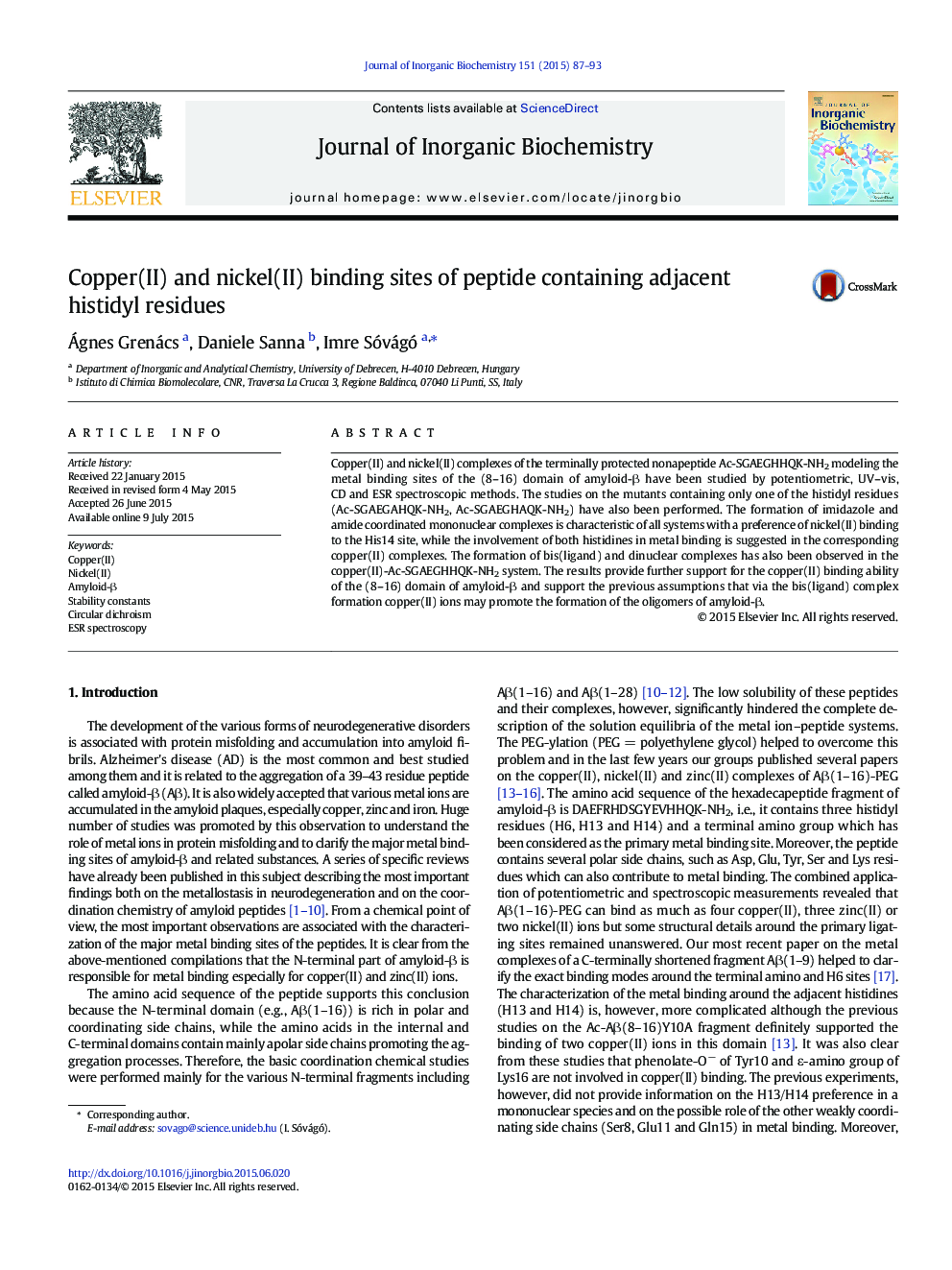| کد مقاله | کد نشریه | سال انتشار | مقاله انگلیسی | نسخه تمام متن |
|---|---|---|---|---|
| 1317032 | 1499436 | 2015 | 7 صفحه PDF | دانلود رایگان |

• For the truncated peptide Ac-Ab(8–16), histidines are the primary binding sites.
• Nickel(II) binding to H14 is favored over H13.
• Both histidines are involved in copper(II) binding even in mononuclear complexes.
• Dinuclear copper(II) complexes are formed with the two-histidine peptide.
• Cu(II)-4Nim coordinated bisligand complexes may promote oligomerization.
Copper(II) and nickel(II) complexes of the terminally protected nonapeptide Ac-SGAEGHHQK-NH2 modeling the metal binding sites of the (8–16) domain of amyloid-β have been studied by potentiometric, UV–vis, CD and ESR spectroscopic methods. The studies on the mutants containing only one of the histidyl residues (Ac-SGAEGAHQK-NH2, Ac-SGAEGHAQK-NH2) have also been performed. The formation of imidazole and amide coordinated mononuclear complexes is characteristic of all systems with a preference of nickel(II) binding to the His14 site, while the involvement of both histidines in metal binding is suggested in the corresponding copper(II) complexes. The formation of bis(ligand) and dinuclear complexes has also been observed in the copper(II)-Ac-SGAEGHHQK-NH2 system. The results provide further support for the copper(II) binding ability of the (8–16) domain of amyloid-β and support the previous assumptions that via the bis(ligand) complex formation copper(II) ions may promote the formation of the oligomers of amyloid-β.
The existence of 4Nim-coordinated bis(ligand) complexes supports the assumption that copper(II) ions may contribute to the oligomerization reactions of amyloid peptides.Figure optionsDownload as PowerPoint slide
Journal: Journal of Inorganic Biochemistry - Volume 151, October 2015, Pages 87–93